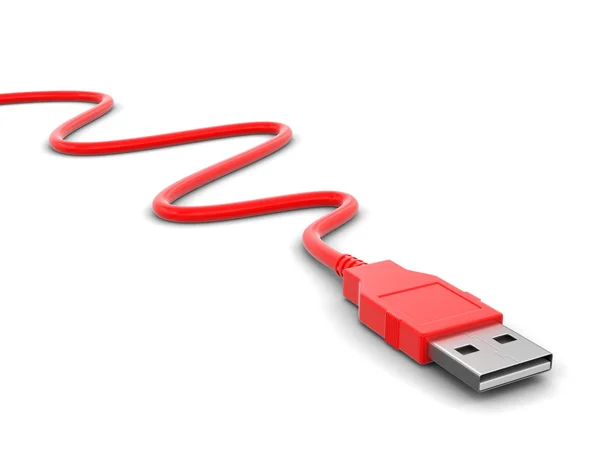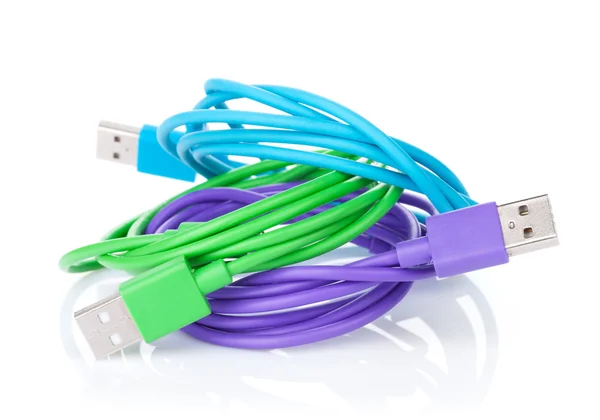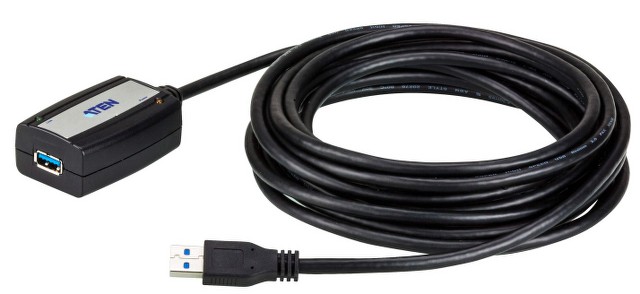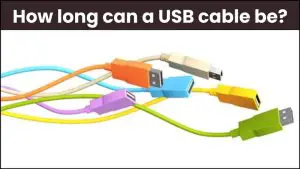Last updated on December 15th, 2023 at 01:55 pm
USB has been a widely chosen communication protocol for data transfer between computers and their peripherals. The distance between connections in those cases is typically short. But gradually, USBs became the first preference for long-distance applications like medical imaging, security cameras, machine vision, etc.

For example, we have multiple USB security cameras around the house that are monitored using a single PC. This demands longer USB transmissions that go beyond the USB-IF standard. Let’s discuss the various possibilities in such a scenario.
But how long can a USB cable be?
The maximum USB cable length is 5m or 16.4ft for USB 2 without any extension cable. Every USB standard has a well-defined maximum length, as prescribed by USB-IF. Since the signal power reduces as the length of the USB cable increases, it is always better to make shorter connections with USB.
Table of Contents
Comparing the standard lengths of USB cables
Different USBs have different maximum cable length requirements. Both the USB Connector Type and USB Generation have a significant impact.
The most recent USB standards, for instance, may support a longer connection length. This is because high-speed transmissions are less vulnerable to losses than slower data transmissions in earlier generations. Still, USB Gen 3.2 has limited cable length.
The table below lists the USB types, the corresponding data speed, and their cable length specifications as imposed by USB-IF.
| USB Version | Data Speed | Maximum Allowed Cable Length |
|---|---|---|
| USB 1 | 12Mbps | ≤ 3m or 9.8ft |
| USB 2 | 480Mbps | ≤ 5m or 16.4ft |
| USB 3.2 Gen 1 | 5Gbps | ≤ 3m or 9.8ft |
| USB 3.2 Gen2 | 10Gbps | ≤ 3m or 9.8ft |
| USB 4 | 40Gbps | ≤ 0.8m or 2.6ft |
The oldest version of USB has the most negligible speed and can be extended only up to 9.8ft. Whereas USB 2.0 has a preferable cable length of up to 16.4ft. Although it is strange, the successive version, USB 3.0 is also limited to the cable length of 9.8ft. Finally, USB 4 prefers a very short cable length of 2.6ft. This might be to avoid signal loss due to long-distance transmissions.
What are the limitations of increasing USB length?
Every signal loses strength as the propagation distance increases. The same happens in the case of USB. It adversely affects the signal power as well as the speed of transmission. It therefore results in errors like corrupted file transfer, choppy video, data reception failures, etc. Hence, the length of the USB cable is a serious concern.
Every USB standard has a pre-defined specification for its cable length to achieve effective transmission. Thus, it is mandatory to follow these length specifications before planning for any type of extension. Length doesn’t matter too much if your chord length falls within the defined range.
How to extend the USB cable length?

As the usage of the USB protocol increases, it is sometimes necessary to achieve a longer cable length to satisfy all the connection requirements without any loss or errors. This might be longer than the pre-defined length.

Let’s see how we can solve such cases.
- The primary solution is to select a USB generation that might satisfy the required cable length.
- The selection of good-quality cable is also very crucial to ensuring the signal travels safely without any losses.
- Active USB cable assemblies like USB Extension Cables, USB Hubs, Optical Fiber Extenders, USB over Ethernet Extenders, etc. are available on the market. These are called active extensions because they come with a booster that enhances signal power before transmission.
- Hence the signal can be transmitted even further. These extenders will have a power supply requirement. So, they can be used where a necessary power supply is available.
- Passive USB extenders that do not require a power supply are also extensively available in the market. Since they do not perform signal boost-up, hence, to avoid losses, we should be careful that the total extension is not beyond the predefined maximum cable length.
- For example, if we extend a 6ft long USB 2.0 cable to 10ft, it works fine. But if this 6ft cable is connected with a 15ft extender, the cable won’t function. Because the maximum desired length of the USB 2.0 cable is 16ft. But here, the total length added to 21ft.
Note: It is possible to make USB extensions up to 150ft using USB 2.0 over Ethernet Extension, using a high-quality Cat 6 cable. This can be again increased to 300ft or more using USB 3.0 Ethernet Extensions with high-quality Ethernet cables.
Conclusion
USBs are primarily meant for shorter connections. However, as demand for the USB protocol has largely increased, it is also preferred for distant connections. Hence, active USB Extension cables can be a perfect solution. Since it boosts signals before transmission, we need not worry about signal losses that might occur in the transmission path.
FAQs
How long can you run a USB-C cable?
The maximum desired length prescribed for USB-C cables is 3m or 9.8ft. But it is always good to keep the length less than 3m.
Are longer USB cables slower?
As long as the cable length is within the restricted range of USB-IF, the transmission may slow down. But if we use active extension cables, we can transmit over longer distances without any losses.
Is it OK to extend a USB-C cable?
Yes, but the extension should not be more than the maximum length defined by USB-IF. If so, the signal power reduces and causes errors. For even longer extensions without any losses, active USB extensions are the best choice.
